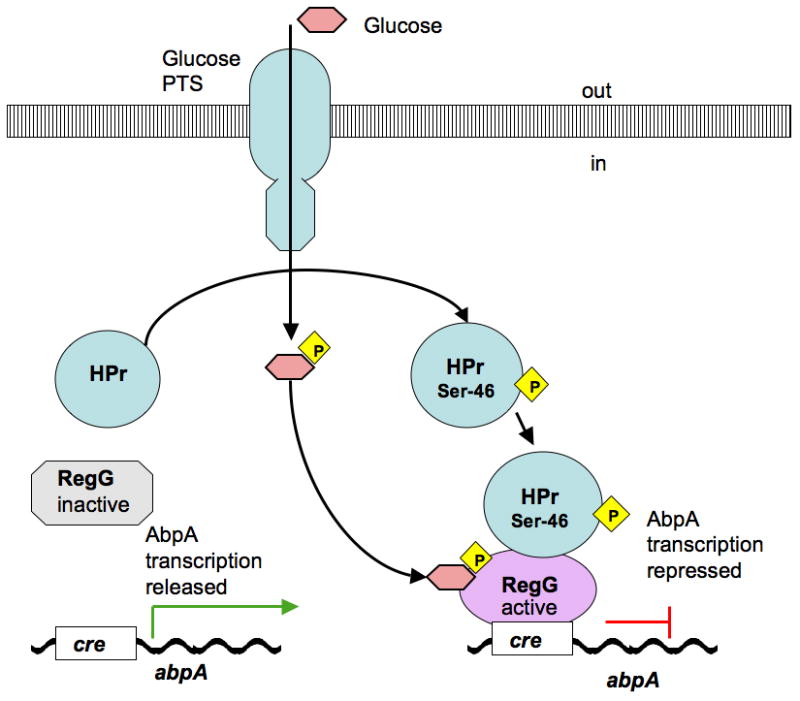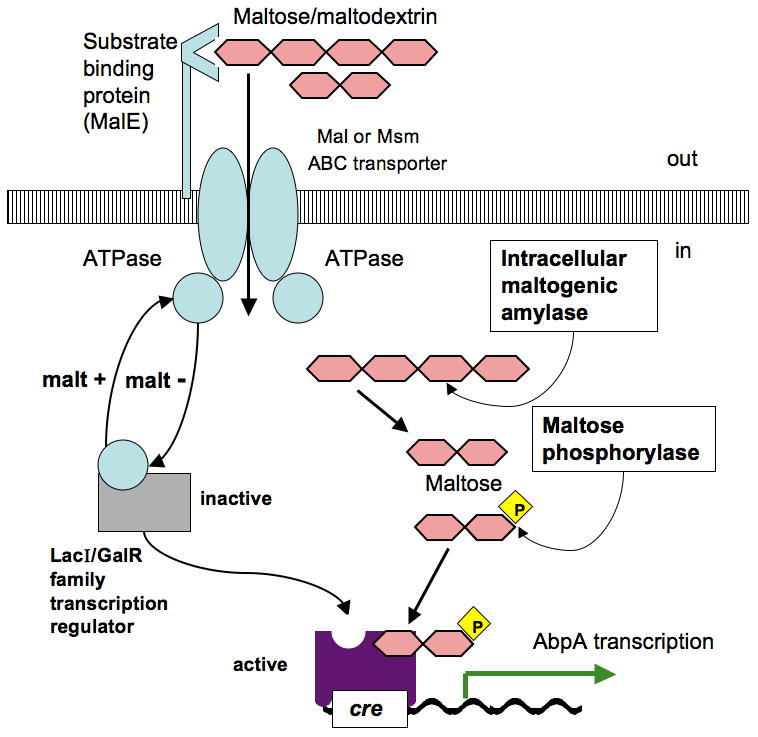Figure 4.


Theoretical model of regulation of abpA gene through catabolite repression by glucose (A) and substrate induction by maltose (B). The proposed model for abpA is adapted from regulatory pathways of carbohydrate utilization machinery described in various microorganisms (Saier et al., 1996; Boos & Shuman, 1998; Rogers & Scannapieco, 2001; Shelburne et al., 2006, 2008a, 2008b; Gorke & Stulke, 2008; Webb et al., 2008). (A) HPr protein becomes phosphorylated on Ser-46 during glucose transport through glucose phosphotransferase, and together with the phosphorylated glucose metabolite binds to RegG; the latter changes conformation and acquires high affinity for cre, which prevents transcription of abpA. (B) LacI/GalR transcriptional regulator is inactive while bonded to ATPase protein, a component of a Mal or Msm ABC transporter; during maltose/maltodextrin transport ATPase releases a LacI/GalR transcriptional regulator; latter binds internalized phosphorylated maltose to its phosphosugar site and becomes active; active LacI/GalR transcriptional regulator acquires high affinity for cre and initiates transcription of abpA.
